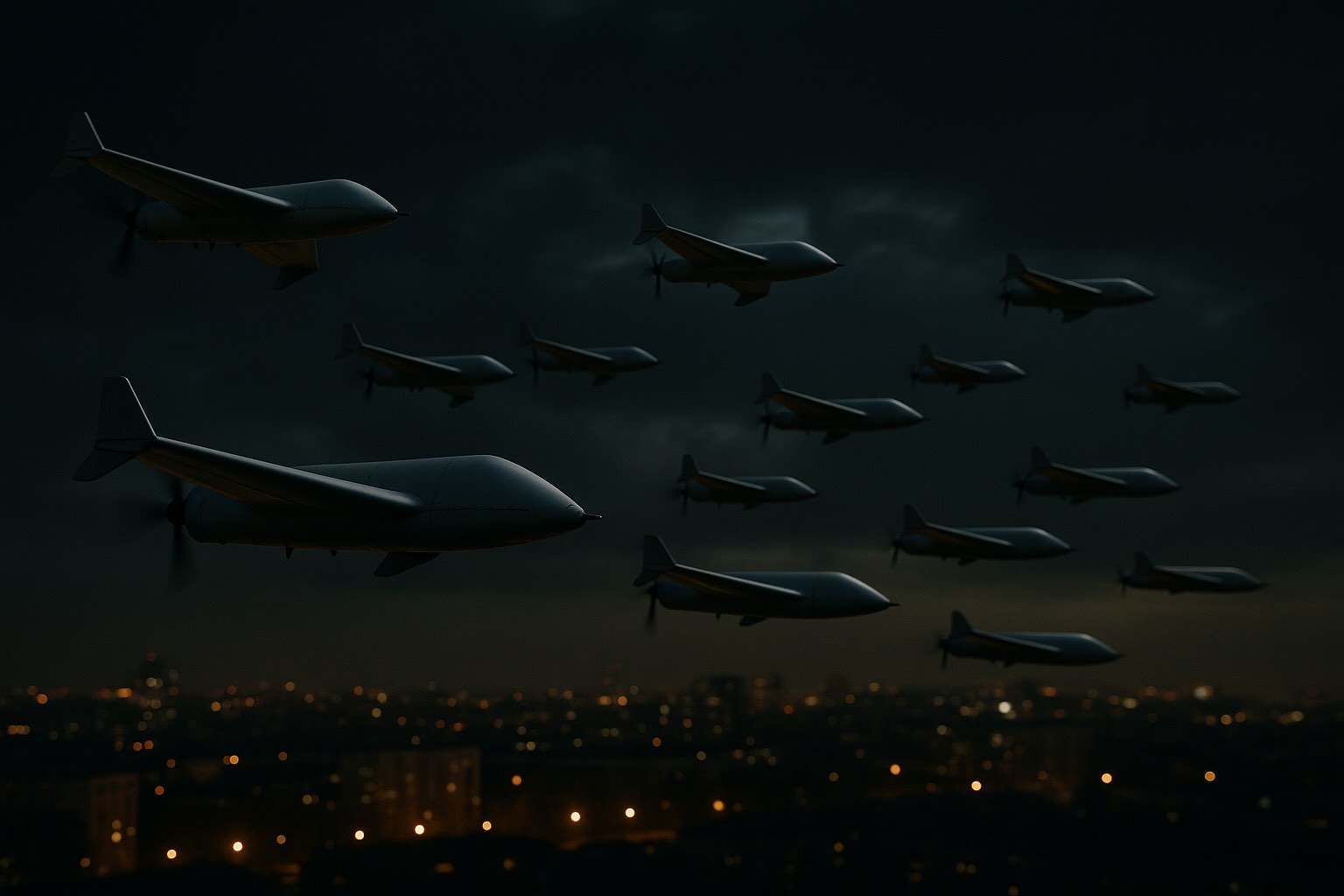


Polish F-16s, supported by Dutch and Italian jets, shot down several drones; searches for debris continued through Wednesday, with components recovered in multiple regions, including as far west as Łódź. Warsaw requested consultations under Article 4 of the North Atlantic Treaty. Article 5 was not invoked.
NATO confirmed the breach and said allied air defences were activated. In an on-the-record statement, Secretary General Mark Rutte condemned the violations and noted that assessments were ongoing — a formulation that signalled caution on operational detail and reinforced that the incident was not isolated. The communiqué did not announce additional deterrent measures beyond consultations.
The facts are stark. Nineteen incursions in a single night, some via Belarus, and the first instance in this war of a NATO state destroying hostile assets inside Alliance airspace. Yet the policy response has so far been procedurally correct rather than strategically dissuasive. Convening Article 4 is prudent; by itself it does not impose costs on the perpetrator nor close the gaps that allowed multiple objects to cross into Polish skies.
Kyiv has again urged Europe to move from statements to architecture: a joint “air shield” that engages threats earlier, ideally over Ukrainian territory, under bilateral or multilateral mandates. President Zelenskyy made the case directly to European leaders, arguing that the continent’s security is better served by forward interception than by repeated scrambles over EU cities. On present evidence, he is right on cost, tempo and risk.
Three shortcomings stand out.
Coverage and speed. The spread of debris and flight tracks indicates that low-altitude detection and cueing remain inconsistent along approach corridors from the east and north-east. Poland’s air force reacted quickly, but nineteen penetrations — with only a subset engaged before crossing — suggest a sensor-to-shooter chain still tuned for manned threats rather than mass, cheap drones. The lesson is not new: denser low-altitude sensing, better PNT-resilient tracking, and automated hand-off between national command centres must become routine, not an aspiration.
OPSEC discipline. Within hours, open sources and some officials had publicised which allied nations contributed fighters and support. That may reassure audiences; it also teaches Moscow how NATO reacts, from basing and refuelling patterns to radar coverage. Rutte’s statement avoided specifics. Others should follow suit. Holding back non-essential detail is not secrecy for its own sake; it preserves the Alliance’s freedom to adapt its playbook without telegraphing every move.
Policy clarity. Warsaw chose Article 4 — the right first move — but allied capitals have not paired consultations with clear, pre-announced consequences for repeat violations. A predictable, graduated ladder is overdue: accelerated sanctions enforcement against Russian defence inputs and energy flows; permanent reinforcement of integrated air and missile defence (IAMD) along the northeastern flank; and a standing mandate, where legally feasible, for cross-border intercept of inbound threats over Ukraine under bilateral agreements (for example Poland–Ukraine, Baltic–Ukraine). Without such a framework, each incident resets the clock.
Belarus claims it warned Poland and Lithuania of “stray” drones and shot down some over its territory. That narrative sits uneasily with Poland’s reporting of deliberate incursions and with the scale of Russia’s strike package. The timing — days before the Russia–Belarus “Zapad-2025” drills — is also notable, given past exercises’ use of diversionary activity near Alliance borders. Allied planners should discount Minsk’s exculpatory framing and plan for further probes during the exercise window.
Europe’s strategic position is not helpless. It is hindered by avoidable friction. Five practical steps would sharpen deterrence and reduce risk:
Forward interception over Ukraine. Conclude time-limited, rules-based bilateral mandates with Kyiv allowing allied aircraft to intercept inbound drones and cruise missiles before they reach EU/NATO airspace. This is legally distinct from a NATO–Ukraine treaty and can be structured as national decisions under domestic law. It is also cheaper and safer than chasing targets over Cologne or Gdańsk.
Close the low-altitude gap. Expand tethered aerostats, passive RF arrays and short-range 3D radars across the Polish–Baltic frontage; integrate feeds into NATO’s Air Command and Control System with automated cross-border hand-off. Prioritise PNT-resilient filters against spoofing and jamming that routinely degrade drone tracks.
Harden response chains. Pre-delegate rules of engagement for drone incursions below certain parameters; stockpile and disperse cheaper interceptors (gun-based C-UAS, programmable airburst, electronic attack) so fast jets are not the default tool for £20,000 targets.
Sanctions that bite where it counts. Tie any further Article 4 consultation to a concrete EU package that tightens enforcement against oil revenues, machine tools and micro-electronics reaching Russia via third countries. Make the escalatory ladder explicit in advance.
Communications discipline. Centralise public information after airspace violations. Publish what is necessary for accountability; suppress details that map reaction times, basing, or refuelling. Align national press lines to NATO’s core facts to avoid mixed signals.
None of this requires waiting for Article 5. It requires allied governments to treat repeated drone incursions as a campaign, not a series of isolated events. The campaign logic is already visible: Russia saturates Ukraine with drones and missiles; a fraction stray or are steered across borders to test response times and political nerve; Belarus offers anodyne explanations; the Alliance resets after a night of alarms.
If Zapad-2025 proceeds as scheduled (12–16 September), further pressure along NATO’s north-eastern edge is probable: more “wayward” flights, GPS interference, and migrant pushes at border crossings. Closing the playbook’s seams now — and demonstrating that each new violation triggers a pre-agreed, cumulative response — is the simplest way to shorten this phase. Poland did its part this week: it detected, scrambled and shot down. The burden now sits with the Alliance to match fast aviation with fast policy.